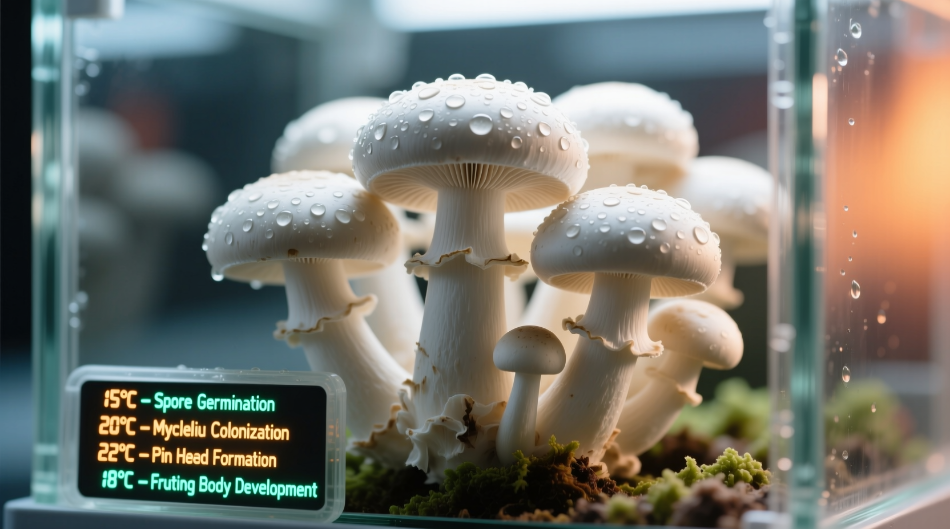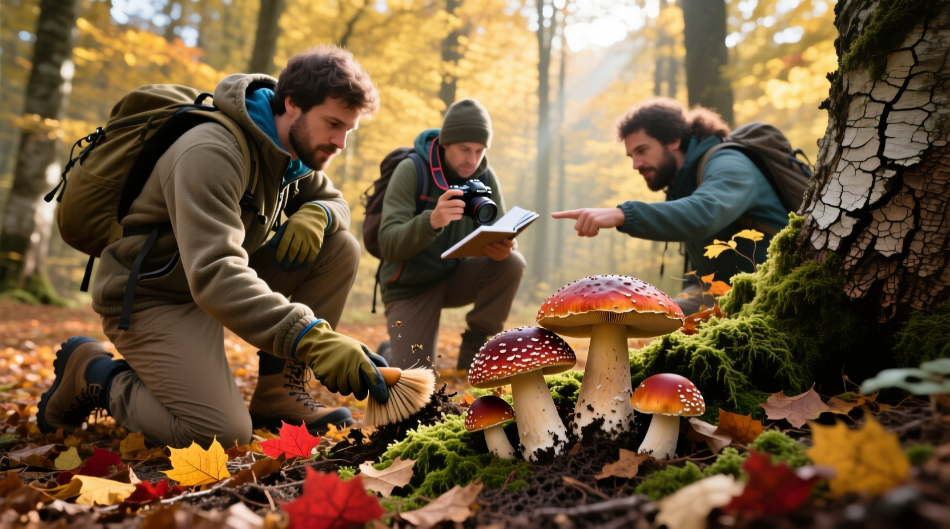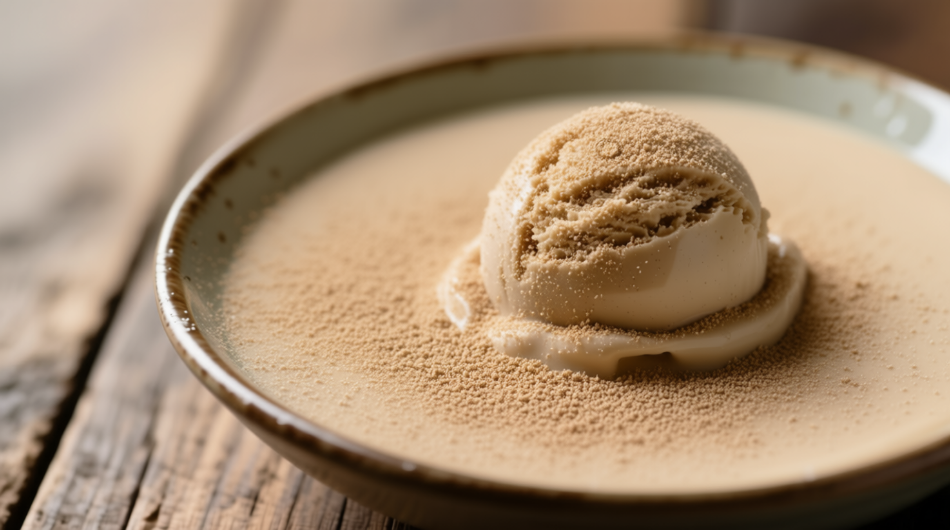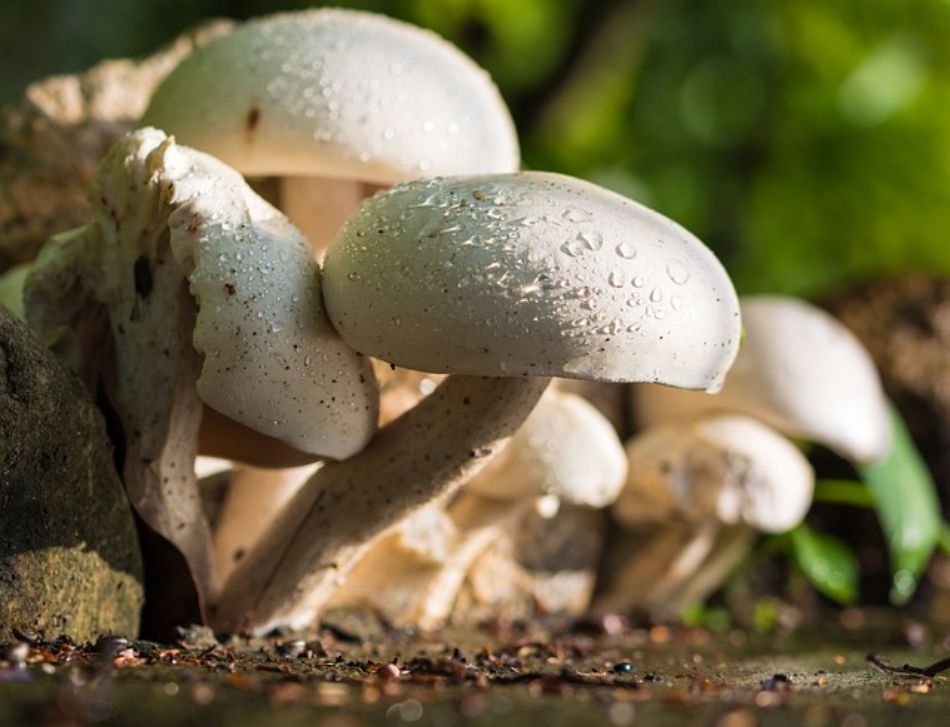Temperature is one of the most critical and determining factors in the entire life cycle of fungi, acting as an invisible director orchestrating the metabolic, enzymatic, and developmental processes of these fascinating life forms. For the mycologist, mycologist, or simple mushroom forager, understanding the intricate relationships between thermal gradients and the different growth stages is not a mere option, but a fundamental necessity for successful cultivation, for correctly identifying species in their habitat, or simply for appreciating the complex biology of the fungal kingdom. This article aims to explore in great detail, supported by scientific data, tables, and field observations, the fundamental role of temperature in each developmental stage, from spore germination to fruiting body senescence, providing a technical reference guide for all those working in the field.
In this article, we delve into the fascinating world of Lentinula edodes, universally known as Shiitake. We'll explore every aspect of this extraordinary mushroom, from its taxonomy and morphology to the most advanced cultivation techniques and its scientifically supported nutritional properties. A comprehensive journey for mycology enthusiasts, mushroom growers, and foragers who wish to deepen their knowledge of one of the world's most studied and prized mushrooms.
Environmental volunteering represents an irreplaceable resource for the conservation of fungal biodiversity: volunteers, through their constant and passionate commitment, actively contribute to the protection of the natural habitats that support diverse fungal species. The analysis will focus not only on the practical aspects of volunteering, but also on its scientific, social, and educational impact within the context of modern mycology.
In the contemporary culinary landscape, experimentation is fundamental to the evolution of taste and preparation techniques, and this is where a recipe that challenges convention comes from: porcini mushroom sorbet. It's not simply a dessert, but a sensory experience that unites the worlds of mycology and modern pastry making. Through a detailed analysis of each aspect, we'll explore the scientific basis, nutritional properties, preparation techniques, and sensory implications of this innovative creation.
A quiet yet powerful revolution is taking place in the food production landscape, fusing the principles of mycology with the most advanced genetic engineering techniques. This article aims to delve deeply into the world of engineered yeast, the microorganisms reshaping our approach to protein production. For mycologists and mushroom breeders, accustomed to manipulating complex eukaryotic organisms, these developments represent not only a scientific curiosity but a logical extension of their expertise in a cutting-edge field. We will analyze every aspect of this technology, from its biological foundations to practical applications, with particular attention to the influence of critical environmental parameters such as light, its specific spectra, and photoperiod management—elements familiar to anyone engaged in controlled cultivation.
Sleep is one of the fundamental pillars of psychophysical well-being, a complex biological process involving numerous neurochemical and hormonal systems. In recent decades, scientific research has focused increasing attention on the properties of medicinal mushrooms, particularly Ganoderma lucidum, commonly known as Reishi, for its modulatory effects on the central nervous system and the sleep-wake cycle. This article aims to analyze in depth the mechanisms through which Reishi positively influences sleep quality, examining the scientific evidence, the active components responsible for its sedative-adaptogen effects, and optimal usage protocols. Through a detailed analysis of the scientific literature and traditional applications, we will seek to understand how this medicinal mushroom can provide a valuable natural support for improving nighttime rest and combating various sleep disorders.
Welcome to this in-depth technical study dedicated to one of the most fascinating and sometimes overlooked aspects of mycoculture: the influence of light on mushroom fruiting. For decades, the common belief among many growers was that mushrooms, lacking chlorophyll and not dependent on photosynthesis, were organisms indifferent to light. The reality, as we will discover in this treatise, is quite different and incredibly complex. Light is not a simple secondary environmental factor: it acts as a precise regulatory signal, a conductor coordinating the physiological processes that lead from the vegetative phase of the mycelium to the magnificent formation of the fruiting bodies.
Panzerotto, scientifically known as Paxillus involutus, represents one of the most interesting and controversial cases in the global mycological landscape. This mushroom, once considered edible after prolonged cooking, is now classified as toxic and potentially lethal. In this article, we will delve into every aspect of this fascinating basidiomycete, from its morphological characteristics to its toxicological mechanisms, including the history of its reclassification and the dangers associated with its consumption.
For centuries, mushroom pickers and mycologists have observed the close correlation between atmospheric precipitation such as rainfall and the appearance of fungal fruiting bodies. This article explores in depth the complex biological, chemical, and physical mechanisms that link this phenomenon to mushroom growth, debunking popular myths and providing detailed scientific data for enthusiasts, mushroom growers, and researchers. Through a multidisciplinary analysis spanning biochemistry and forest ecology, we will seek to fully understand one of the most fascinating and observed natural phenomena in the mycological world.
Today, we'd like to provide you with an in-depth look at every aspect of rice with honey mushrooms and rosemary, from correct species identification to a complete nutritional analysis, including scientifically validated cooking techniques that enhance the organoleptic properties of this exceptional edible mushroom.
















 – Un fungo tossico se consumato crudo!_950.png)

